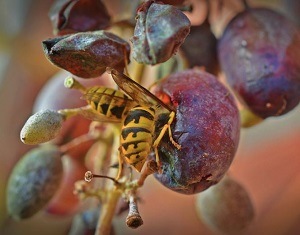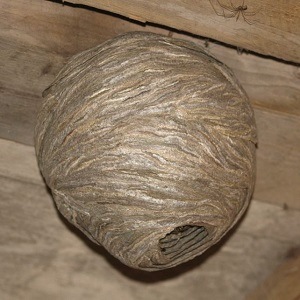Yellow Jackets

Yellow Jackets, or Yellowjackets, are the most aggressive types of wasps in North America, and sometimes are confused with hornets.
They are not the exclusive pollinators of any plant species. In the absence of, or in addition to bees, they serve only a minor pollination function.
Their most significant function is in agriculture. Yellowjackets are omnivorous.
They help eliminate overripe and rotten food and prey on other pests who damage crops and gardens.
They also scavenge garbage, sugary foods, and meats.
Wasp Removal Services Near You
Get a Croach® pest exterminator near:
Free Pest Inspection
Reasons to Get Rid of Yellow Jackets
Around humans, the yellow jacket is a dangerous stinging pest.
Wasp Stings
A yellow jacket stinger is slightly barbed. They can sting multiple times, like wasps, and occasionally lose their stinger in the skin, like bees, for the worst of both worlds. They also bite. The stings are painful and itchy.
While a single wasp sting is rarely dangerous unless the victim has a toxic reaction, multiple stings can become a health threat. Seek immediate professional medical attention.
Wasp Nests

Yellow Jackets damage plants and homes to gather materials for nests. Most species prefer to build their nests in hollow places including attics, sheds, and wall voids. They have been known to dig through drywall for materials and to create openings.
Others, like the aerial yellowjacket and tree wasps, build inverted umbrella-shaped nests in eaves and branches. The bald-faced hornet builds an egg-shaped nest in attics, trees, and eaves. Like hornet nests, it has a single opening at the bottom.
Yellow Jackets aggressively defend their nests when they sense a threat. Going too near the hive entrance is a sure way to trigger a swarm. Noises and vibrations, such as heavy footsteps and running lawnmowers, as well as certain scents, can trigger this defense as well.
Each wasps nest reaches a size of up to 5,000 wasps at the height of the season. Southern yellow jacket nests can contain tens of thousands.
Identifying Yellow Jackets
Most yellow jackets are yellow and black (the bald-faced hornet, a yellow jacket species, is black and white) and are about the same size as honey bees. Unlike bees, they do not have hairs or flat legs for collecting pollen.

Like all wasps, the yellow jacket has a thin waist between abdomen sections. They have large mandibles for chewing insects and plant matter, and a proboscis for gathering nectar and juices.
They have two pairs of wings, the front longer than the rear, and lay them back along their body when at rest.
One of their most identifying features is a rapid side-to-side flight pattern just before landing.
Life Cycle
A queen seeks out a nest in spring. She lays eggs which birth female workers, then feeds the first generation through their larval stage.

The workers pupate, emerging as fully grown yellow jackets and take over nest building, care of the young, and food gathering.
In late summer the queen lays future queens and fertile males. These new yellow jackets mate and the future queens find a place to winter in the soil, leaves, and hollow spaces.
All other yellow jackets die out during fall, and the nests deteriorate. Southern yellowjacket nests remain active during winter and contain multiple queens, explaining their large size.
Yellow Jacket Removal and Control
Getting rid of wasps is essential if they are invading your property or nesting in public places. Ongoing treatment, elimination, and advice on making your home less appealing are all part of Croach®’s professional yellow jacket treatment.
Croach® Pest Control Solution
Initial Inspection
A Croach® licensed pest control technician will perform a thorough inspection of your property and discuss potential problems. A customized plan for extermination and ongoing management is presented. Then your home’s interior and exterior are treated to begin pest control services.
Regular Services
Ongoing pest control and management are in your best interest for the health and safety of your home, family, and pets. We will fortify a protective barrier around the outside of your property and apply exclusion methods as needed. Your technician uses environmentally-friendly products whenever possible.
Free Retreats Guarantee
If you experience pest activity in between regularly scheduled services, Croach® will return and retreat the affected areas free of charge. If we have not fixed the problem after two retreats, we will refund your last full payment.
Free Pest Inspection

